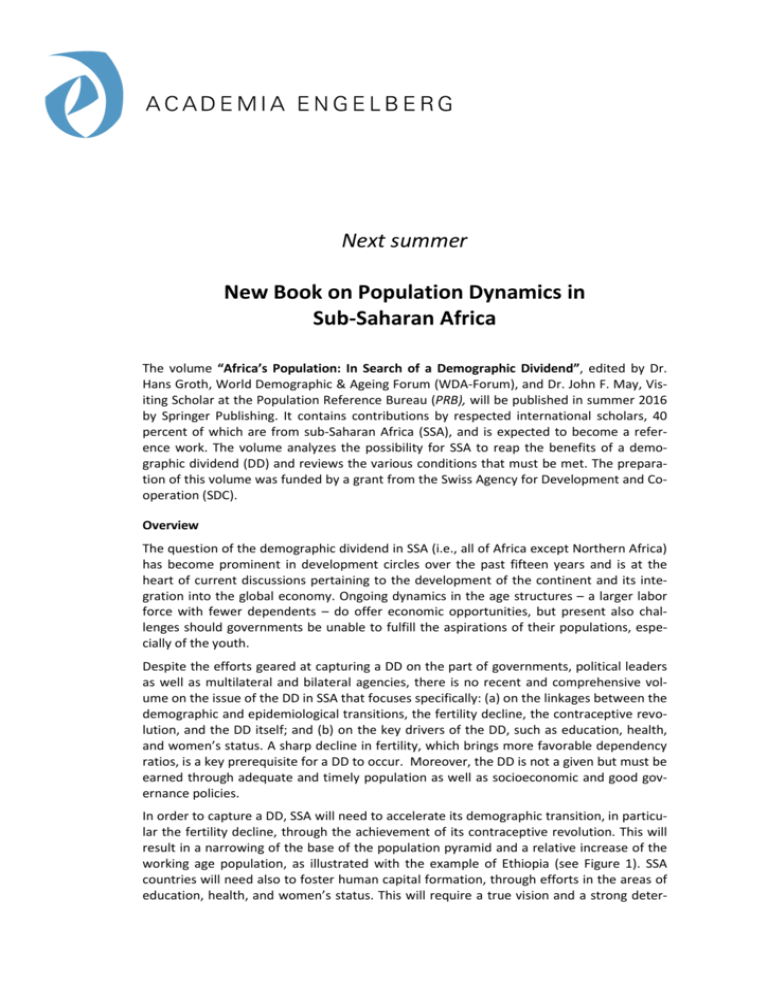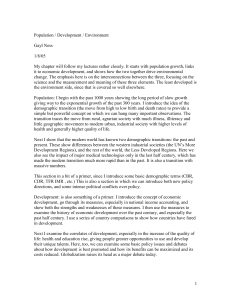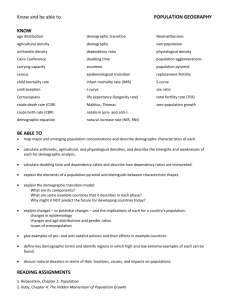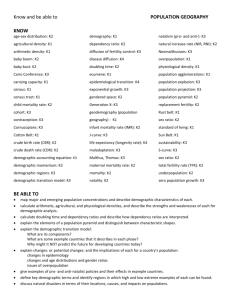New Book on Population Dynamics in Sub
advertisement

Next summer New Book on Population Dynamics in Sub-Saharan Africa The volume “Africa’s Population: In Search of a Demographic Dividend”, edited by Dr. Hans Groth, World Demographic & Ageing Forum (WDA-Forum), and Dr. John F. May, Visiting Scholar at the Population Reference Bureau (PRB), will be published in summer 2016 by Springer Publishing. It contains contributions by respected international scholars, 40 percent of which are from sub-Saharan Africa (SSA), and is expected to become a reference work. The volume analyzes the possibility for SSA to reap the benefits of a demographic dividend (DD) and reviews the various conditions that must be met. The preparation of this volume was funded by a grant from the Swiss Agency for Development and Cooperation (SDC). Overview The question of the demographic dividend in SSA (i.e., all of Africa except Northern Africa) has become prominent in development circles over the past fifteen years and is at the heart of current discussions pertaining to the development of the continent and its integration into the global economy. Ongoing dynamics in the age structures – a larger labor force with fewer dependents – do offer economic opportunities, but present also challenges should governments be unable to fulfill the aspirations of their populations, especially of the youth. Despite the efforts geared at capturing a DD on the part of governments, political leaders as well as multilateral and bilateral agencies, there is no recent and comprehensive volume on the issue of the DD in SSA that focuses specifically: (a) on the linkages between the demographic and epidemiological transitions, the fertility decline, the contraceptive revolution, and the DD itself; and (b) on the key drivers of the DD, such as education, health, and women’s status. A sharp decline in fertility, which brings more favorable dependency ratios, is a key prerequisite for a DD to occur. Moreover, the DD is not a given but must be earned through adequate and timely population as well as socioeconomic and good governance policies. In order to capture a DD, SSA will need to accelerate its demographic transition, in particular the fertility decline, through the achievement of its contraceptive revolution. This will result in a narrowing of the base of the population pyramid and a relative increase of the working age population, as illustrated with the example of Ethiopia (see Figure 1). SSA countries will need also to foster human capital formation, through efforts in the areas of education, health, and women’s status. This will require a true vision and a strong deter- mination on the part of African leaders and their development partners. Socioeconomic development alone will not bring the necessary demographic changes. One will need also to intervene on the demographic trends themselves. This can be achieved with some degree of efficiency, while abiding by the framework of the reproductive rights designed at the International Conference on Population and Development (ICPD) held in Cairo in September 1994. Figure 1: Population Pyramids for Ethiopia in 1990, 2010, and 2030 (projection) Source: United Nations Population Division, World Population Prospects: The 2015 Revision (New York: United Nations, 2015). The current climate of optimism around the socioeconomic prospects of sub-Saharan Africa should not overshadow the importance of its demographic challenges. On the contrary, it appears that tackling SSA population challenges decisively will be a necessary condition for the SSA 48 sovereign countries to open their demographic window of opportunity, capture their demographic dividend, and finally join the group of emerging economies. 2






